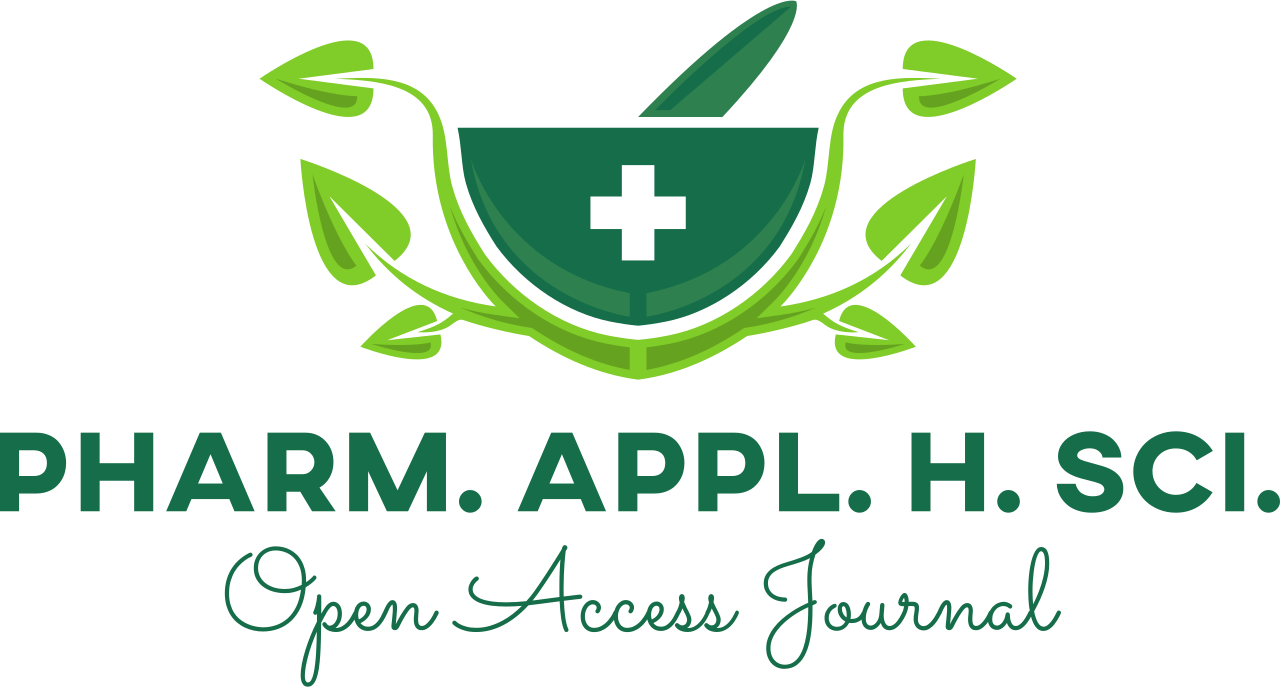Exercise Cause Patellofemoral Pain among Young Adult: a Cross Sectional Study
DOI:
https://doi.org/10.59480/phahs.v1i2.31Keywords:
Keywords: Patellofemoral pain syndrome (PFPS), Athletic, Non-Athletic.Abstract
AbstractPatellofemoral pain syndrome (PFPS) is a prevalent musculoskeletal injury affecting both athletes and non-athletes, characterized by anterior knee pain. Diagnosis can be difficult due to similar symptoms with other conditions. Treatment should focus on overall rehabilitation, including strengthening and stretching exercises, rest, ice, bracing and taping. The knee joint is complex and plays an important role in daily activities, but is also one of the most commonly injured joints.This study was conducted at the University of Erbil Technical and Medical Health College to investigate PFPS in college students aged between 20-40 years there were 102 participants. A self-report questionnaire was used to collect data on biographic information. It was found that instead of the knee pain is more among the athletic group but the result statistically insignificant predictor of knee pain among the study participants P-value = 0.823. Finally, our study concluded that athletic and non-athletic developed PFPS , but athletic more than non- athletic , male and female affected by this condition, also types of exercises have effect according to results strengthen and stretching exercise they do for example football, fitness caused PFPS.
References
Pereira PM, Baptista JS, Conceição F, Duarte J, Ferraz J, Costa JT. Patellofemoral Pain Syndrome Risk Associated with Squats: A Systematic Review. International Journal of Environmental Research and Public Health. 2022 Jul 28;19(15):9241. Available at: https://www.mdpi.com/journal/ijerph
Halabchi F, Abolhasani M, Mirshahi M, Alizadeh Z. Patellofemoral pain in athletes: clinical perspectives. Open Access Journal of Sports Medicine [Internet]. 2017 Oct;Volume8(8):189–203.Available from: https://www.dovepress.com/patellofemoral-pain-in-athletes-clinical- perspectives-peer-reviewed-fulltext-article-OAJSM
Hryvniak, D., Magrum, E., & Wilder, R. (2014). Patellofemoral pain syndrome: An update. Current Physical Medicine and Rehabilitation Reports, 2(1), 16–24. https://doi.org/10.1007/s40141-014-0044-3
Reid, H., Harper, J. and Wood, S. (2019) Patellar femoral pain syndrome (PFPS) - ouh, Patellar Femoral Pain Syndrome (PFPS) Advice and management. Oxford University Hospital. Available at https://www.ouh.nhs.uk/patient-guide/leaflets/files/33852Ppfps.pdf (Accessed: October 16, 2022).
Lack S, Neal B, De Oliveira Silva D, Barton C. How to manage patellofemoral pain – Understanding the multifactorial nature and treatment options. Physical Therapy in Sport [Internet]. 2018 Jul [cited 2019 Sep 20];32:155–66. Available from: https://www.sciencedirect.com/science/article/pii/S1466853X17306740
Thomeé R, Augustsson jesper, Karlsson jon. Patellofemoral pain syndrome: A review of current issues. Sports Medicine [Internet]. 1999 Nov;28(4):245–62. Available from: https://www.researchgate.net/publication/12734774_Patellofemoral_pain_syndr ome_A_review_of_current_issues
Dixit S, Difiori JP, Burton M, Mines B. Management of Patellofemoral Pain Syndrome. American Family Physician [Internet]. 2007 Jan 15;75(2):194–202. Available from: https://www.aafp.org/pubs/afp/issues/2007/0115/p194.html
Juhn MS. Patellofemoral Pain Syndrome: A Review and Guidelines for Treatment. American Family Physician [Internet]. 1999 Nov 1;60(7):2012–8. Available from: https://www.aafp.org/pubs/afp/issues/1999/1101/p2012.html
Salamifar, S., Nasermeli, M. H., & Namin, B. G. (2017). The effect of isometric and isotonic exercises of lower limbs extensor sling on static and dynamic balance in basketball players with patellofemoral pain. Health, 09(10), 1355– 1366. https://doi.org/10.4236/health.2017.910099
Pollatos, D., Chandolias, K., Giordamni, M.-A., Chalkia, A. and Trevlaki, E. (2021). Review of New Data in Physiotherapeutic Approach to Patellofemoral Pain Syndrome (PFPS). Journal of Biosciences and Medicines, 09(02), pp.103– 125. doi:https://doi.org/10.4236/jbm.2021.92010.
Basanta E. A pain-coping approach for chronic patellofemoral pain syndrome A randomized controlled clinical trial [Internet]. [cited 2023 Apr 21]. Available from:https://dugidoc.udg.edu/bitstream/handle/10256/18536/VicenteBasantaEle na-TFG.pdf?sequence=1
Gusti Lanang Ngurah Agung Artha Wiguna I, Setiawan CR. Patellofemoral Pain Syndrome: Literature Review. International Journal of Scientific and Research Publications (IJSRP). 2022 May 24;12(5):21.
Petersen W, Rembitzki I, Liebau C. Patellofemoral pain in athletes. Open Access Journal of Sports Medicine. 2017 Jun;Volume 8:143–54.
Austin W. Women in Sports, Q Angle, and ACL Injuries [Internet]. dynamic chiropractic. 2017.Available from: https://dynamicchiropractic.com/article/9424-women-in-sports-q-angle-and-acl- injuries
Patellofemoral Pain Syndrome. (n.d.). Bria Dunn. Unc.edu. Retrieved April 20, 2023,from PatellofemoralPainSyndrome_DunnPortfolio.pdf
Darling S, Finsaas H, Johnson A, Takekawa A, Wallner E. Risk Factors for Patellofemoral Pain Syndrome. Doctor of Physical Therapy Research Papers [Internet]. 2012 Mar 1 [cited 2023Apr21]; Available from: https://sophia.stkate.edu/dpt_papers/17/?utm_source=sophia.stkate.edu%2Fdpt_ papers%2F17&utm_medium=PDF&utm_campaign=PDFCoverPages
Donohue M. Runner’s Knee [Internet]. Healthline. Healthline Media; 2012. Available from: https://www.healthline.com/health/runners-knee
Reid h, harper j, wood S. patellar femoral pain syndrom (pfps) advice and management [Internet]. oxsport - department of sport and exercise medicine; 2019. Available from:https://www.ouh.nhs.uk/patient- guide/leaflets/files/33852Ppfps.pdf
Dey, P., Callaghan, M., Cook, N. et al. A questionnaire to identify patellofemoral pain in the community: an exploration of measurement properties. BMC Musculoskelet Disord 17, 237 (2016). https://doi.org/10.1186/s12891-016-1097-5
Crossley KM, Macri EM, Cowan SM, Collins NJ, Roos EM. The patellofemoral pain and osteoarthritis subscale of the KOOS (KOOS-PF): development and validation using the COSMIN checklist. British journal of sports medicine [Internet]. 2018 [cited 2019 Nov 25];52(17):1130–6. Available from: https://www.ncbi.nlm.nih.gov/pubmed/28258176
Xu X, Yao C, Wu R, Yan W, Yao Y, Song K, et al. Prevalence of patellofemoral pain and knee pain in the general population of Chinese young adults: acommunity-based questionnaire survey. BMC Musculoskeletal Disorders [Internet]. 2018 May 24;19(1).Available from: https://bmcmusculoskeletdisord.biomedcentral.com/articles/10.1186/s12891- 018-2083-x
Langtree, I. (2016, May 20). Pain scale chart: 1 to 10 levels. Disabled World. https://www.disabled-world.com/health/pain/scale.php
Sattar, N., & Lean, M. (2009). ABC of Obesity (N. Sattar & M. Lean, Eds.). BMJ Books. https://www.wiley.com/en-us/ABC+of+Obesity-p-9781444312706
Downloads
Published
How to Cite
Issue
Section
License
Copyright (c) 2023 Zekra Ali Aziz , Hardi Bahram Sdeeq, Narin Asoad Aziz, Handren Fatih Khder, Shiraz Shirzad Abdullah

This work is licensed under a Creative Commons Attribution-NonCommercial-NoDerivatives 4.0 International License.
All PHAHS Journal articles are published under the terms of the Creative Commons Attribution-NonCommercial-NoDerivatives 4.0 International License (CC BY-NC-ND 4.0) which allows authors retain copyright and others may not use the material for commercial purposes. A commercial use is one primarily intended for commercial advantage or monetary compensation. If others remix, transform, or build upon the material, they may not distribute the modified material.
Copyright on any research article published by the PHAHS Open Access journal is retained by the author(s). Authors also grant any third party the right to use the article freely as long as its original authors, citation details and publisher are identified.
Use of the article in whole or part in any medium requires attribution suitable in form and content as follows: [Title of Article/Author/Journal Title and Volume/Issue. Copyright (c) [year] [copyright owner as specified in the Journal]. Links to the final article on PHAHS website are encouraged where applicable.
The CC BY-NC-ND 4.0 Creative Commons Attribution License does not affect the moral rights of authors, including without limitation the right not to have their work subjected to derogatory treatment. It also does not affect any other rights held by authors or third parties in the article, including trademark or patent rights, or the rights of privacy and publicity. Use of the article must not assert or imply, whether implicitly or explicitly, any connection with, endorsement or sponsorship of such use by the author, publisher or any other party associated with the article.










